Stuyvesant Cove and Stuyvesant Town
by Anne Lazarus
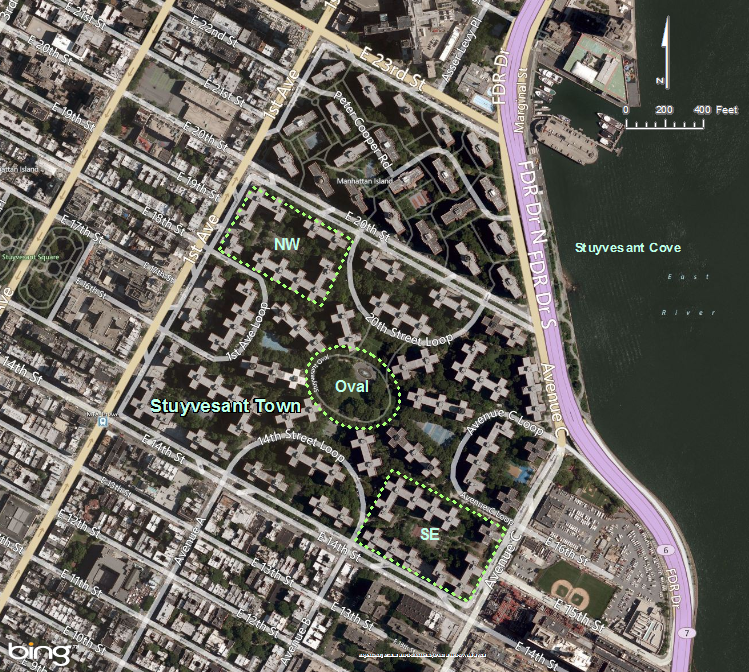
Stuyvesant Cove
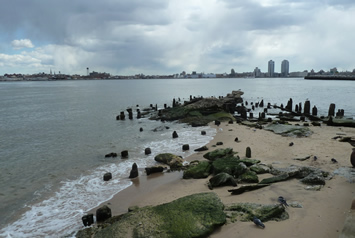
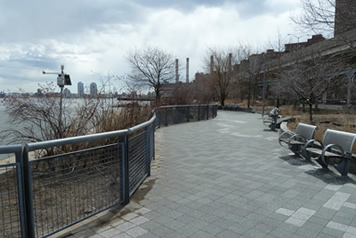
Stuyvesant Cove runs from East 18th Street to East 23rd Street along the East River. The Cove is of primary interest for its wintering ducks, such as Red-breasted Mergansers, Buffleheads and Ruddy Ducks. More unusual birds have made an appearance, including Razorbill (2013) and Pacific Loon(2003). Be on the lookout for other loons, occasional Iceland Gull and other water birds. Although the Cove has limited habitat for passerines, it does attract the occasional migrant passerine or hawk. Perhaps the short list of warblers and sparrows is due to the paucity of observers during migration. Barn Swallows nest near the Cove in the spring and summer. Stuyvesant Cove was severely damaged by Hurricane Sandy but is being restored.
Stuyvesant Town
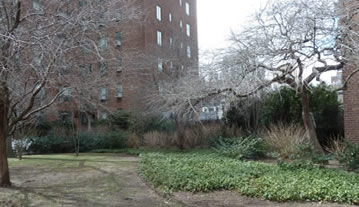
Stuyvesant Town, opened in 1947, was constructed by Metropolitan Life as a residential housing complex that gave priority to veterans of World War II. The project has subsequently gone through ownership changes and encountered financial and other challenges. However, the campus remains inviting to birds and birding.
The Town is roughly a rectangle with an Oval in the Center. It runs from East 14th Street north to East 20th Street, and from First Avenue east to Avenue C. Each side of the complex has two entrances leading to a loop. If you follow the paths into the complex you will find the Oval at the center of the Town: a grassy interior with trees. Over the years many warblers, sparrows, thrushes, kinglets and other migrants have been reported from the Town.
Birds
Although birds can be found anywhere, the upper, hillier areas and the Oval are the better areas for sighting birds. In the late fall and winter through part of February finches are attracted to the Sweetgum trees. Warblers have included Pine, Blackburnian, and Bay-breasted Warblers, Northern and Lousiana Waterthrushes, Ovenbird, and Yellow-breasted Chat (2012). Other migrants seen have included Field, Fox and White-crowned Sparrows, Pine Siskins, both kinglets, and several thrushes. We will discuss several of the better places to bird.
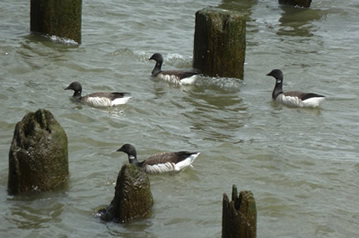
One area is in the northwest quadrant and marked NW on the map. Enter the complex from First Avenue and East 18th Street. Turn left or north and go up the short ramp or short flight of long steps. This whole area with grass, shrubs and trees attracts a variety of birds (an American Woodcock once). A Grasshopper Sparrow made an appearance on the first grassy area here in 2008, and a Mourning Warbler was here in late fall 2012. Look in the Sweetgum tree at the north end of the path for finches. Thrushes and other songbirds can be sighted here during migration. Also, walk the path south past East 16th Street for the other Sweetgums.
Another area worth checking is in the southeast quadrant and marked SE on the map. This area borders Avenue C. The most productive area lies between the two buildings alongside Avenue C: 271 Avenue C and 245 Avenue C. Part of it is recessed between the two buildings, with stony paths for service vehicles. The area can be neglected at times and weedy. Various sparrows can be seen here, including a late Chipping Sparrow ten days before one Christmas Count. In the spring there can be Palm Warblers and other migratory birds in the trees and grasses. It can also be worthwhile to check the surrounding areas. It is easiest to enter this area from East 14th Street at the Avenue B entrance and walk east and up the ramp or wide steps. Alternatively, you can come in through Avenue C, but the route is less straightforward.
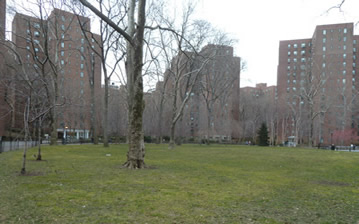
The Oval: The majority of birds seen in the Oval are in its southwest corner, opposite the glass building called Study, near the patrol booth. A Connecticut Warbler was found in this area in 2012. The area can attract sparrows in winter, depending on the level of lawn care. The Oval area attracts migrants in the spring and fall.
Other areas: The flagpole cul-de-sacs can also be interesting to bird if there is time to do so. Some are planted and fenced. A few have hollies that attract Hermit Thrushes.
Summer: Summer is usually not a productive time to bird Stuyvesant Town.
Birds sometimes collide with the glass in buildings surrounding the Oval. The residents hope to address this situation. Please be aware that Stuyvesant Town is private property. Birders should comply with the relevant section of the ABA code of ethics.
Directions to Stuyvesant Cove
View Larger Map | Get Directions
To enter at East 23rd Street, take the M23 east to the next to the last stop, opposite the BP gas station at Avenue C. To go in at the 20th Street entrance, stay on the M23 bus to the last stop at East 20th Street and Avenue C. To enter at East 18th Street, take the M14D to the furthest east stop near Avenue C. Walk to Avenue C and north to East 18th Street. Cross the street where the cars exit the FDR and enter the Cove. The M9 and M34A also stop in the vicinity.
You can also take the L train to the First Avenue Station, but you will have to walk three avenues to Avenue C and then north to East 18th Street.

